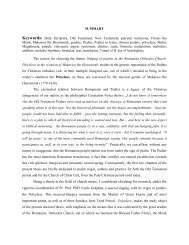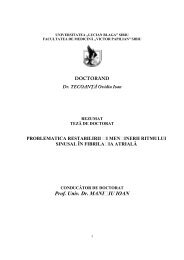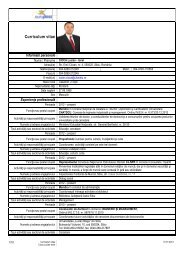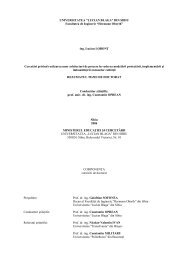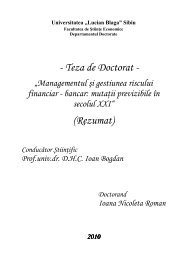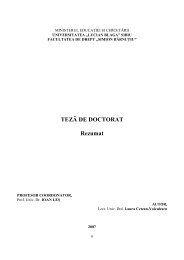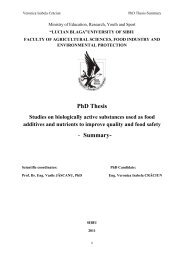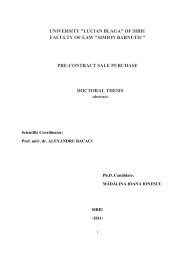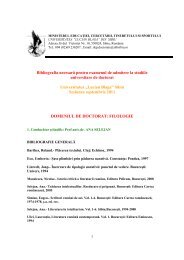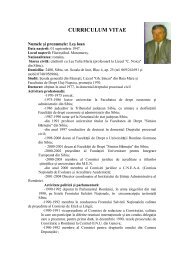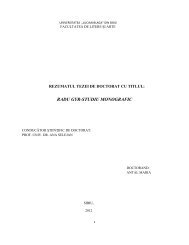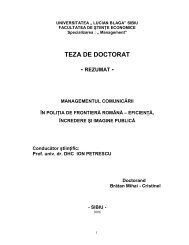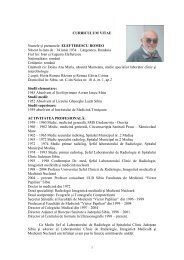was awarded (two prizes of the Writers’ Union, in 1967 and 1970, the Prize for Proseof the magazine România literară in 1968, the Prize of the Council of Culture andSocialist Education and that of the Academy of Romania, both in 1970), as well as thepositions he held (employee at the Embassy of the United States of America starting1963, editor-in-chief and deputy manager of the Cartea Românească PublishingHouse from 1970 to 1973, secretary of the Writers’ Union between 1970-1972,director of the Movie House No. 1 between 1972 and 1974). Then, there were hisvisits abroad (the scholarship got to Iowa-City University, U.S.A. in 1968, the visitsto several European and Asian countries) and the “top” positions held in the culturaladministration, which used to allow access only to those the regime relied on. In thesame category we could include the enormous number of copies printed for some ofhis books, the republications, the essays he had written under the influence of theMarxist ideology.On the other hand, there is the evidence given by his close friends and thewriter’s Securitate file, which demonstrate clearly that Alexandru Ivasiuc did notcooperate with the Political Police, but was pursued for hostile manifestationsregar<strong>din</strong>g the policy of the party. In this subchapter we have shown that he was not aconformist in his essays either, his meeting the authorities’ requirements being onlyapparent. His unorthodox approach arises both from the statements made by hisacquaintances and from the ideas promoted in his work. After dealing with some ofthe ideas Ivasiuc introduced in his essays, we have shown that, under the mask of afighter for the fulfilment of the strategy of the party, demonstrating his goodgroun<strong>din</strong>g in Marxism-Leninism, he was loyal to a Marxism to which the officialsgave a totally different interpretation. From our perspective, in the chapter entitledMarxism and Literature he wanted to point out exactly this contradiction betweenwhat Marxism could be and what it looked like in our country, Ivasiuc undermining inthis manner the official doctrine with its own weapons. This vision seems to beconfirmed by the general appreciation his essays received at the “Free Europe” RadioStation, where they were considered “a kind of intellectual heroism” 2 .Therefore, we consider that one cannot talk about the concrete writer Ivasiuc’ssincere adhesion to the requirements of his time, about his being in the service of the2 Anneli Maier, Trends in Rumanian Literature, 16.10. 1969 (<strong>din</strong> materialele Postului de Radio EuropaLiberă), p. 8;10
party, but about a compromise through which he paid a tribute for the literary work hepublished and for the comforts he had.In fact, the analysis of the concrete and abstract instance of the author, both inthe case of Alexandru Ivasiuc, and of the writers of the 60s, in general, lead to theconclusion that there is a cleavage within the writer’s concrete personality which is tobe identified at the level of the abstract author as well. This occurs because theabstract author had to encompass the requirements of the communist censure,therefore a form and content that would conform, but also address the audience whichlooked for a confirmation of the everyday realities television and the radio wouldnormally beautify. Last but not least, willing to preserve their artistic integrity, the 60swriters wrote for professional readers as well, for literary critics with an acuteaesthetic sense who were eager to support a cliché-free literature.Amongst those ingenious techniques used by these writers in order to subvertthe official discourse, this thesis discusses the emphasis laid on representing thecharacters’ inner self and on desocializing the conflict, the Aesopian discourse andthat centred on myth, symbol and parable, the satirical and “obsedantist” fiction, thecharm and colour of the language.Analysing the literary work from its creation to its publication, we havepointed out in our research that the symmetrical pole of subversiveness, withoutwhich it would remain only a potentiality, is represented by the readers of themoment. The conclusion we have come to after investigating the evidence given bythose who lived in that period of time and of the studies that have been carried out sofar as regards the rea<strong>din</strong>g behaviour in communist Romania is that the writers of the60s relied on a hypertrophy of the readers’ role, who, because of the marked lack ofalternatives to spen<strong>din</strong>g spare time, specialized in transgressing the first textual level,thus applying rea<strong>din</strong>g grids which would allow daring ideas to appear and completingtruths that could be only half uttered by the writers. Thus, by their abstract position,readers became partners in creating the sense, in giving meaning to the prestructuresincluded by the abstract author, filling in the blanks of indeterminacy of the author.Based on the work of Alexandru Ivasiuc, in the subchapter dedicated to themechanism of buil<strong>din</strong>g the sense by the reader we have also dwelled upon theparatextual and intratextual elements, those landmarks which, in Paul Cornea’sopinion, guide the reader’s understan<strong>din</strong>g of the profound message of the text.Therefore, we have referred to ”rumour”, i.e. to the mediation of the reader’s contact11
- Page 2 and 3: TABLE OF CONTENTSINTRODUCTION .....
- Page 4 and 5: SUMMARYThe doctoral thesis Narrativ
- Page 6 and 7: politics in Romania revealed the au
- Page 8 and 9: names began to emerge: Nicolae Breb
- Page 12 and 13: with the text through the opinions
- Page 14 and 15: integrate elements involving both n
- Page 16 and 17: omniscience, from the discourse cha
- Page 18 and 19: “zero degree narratee”, any dev
- Page 20 and 21: the two main directions existing in
- Page 22 and 23: portrayal, but one based on signifi
- Page 24 and 25: What the characters discover after
- Page 26 and 27: The analysis on the character also
- Page 28 and 29: internal, the focalized can be perc
- Page 30 and 31: Koppe 37 , that the relation focali
- Page 32 and 33: epresented by a proliferation of an
- Page 34 and 35: BIBLIOGRAPHYI. OPERA LUI ALEXANDRU
- Page 36 and 37: 6. Popescu-Neveanu, Paul, Dicţiona
- Page 39 and 40: 45. Neagu, Fănuş, Cartea cu priet
- Page 41 and 42: 21. Călinescu, George, Scriitori s
- Page 43 and 44: 60. Iser, Wolfgang, The Implied Rea
- Page 45 and 46: 98. Pârvulescu, Ioana, Prejudecă
- Page 47 and 48: 140. Selejan, Ana, Literatura româ
- Page 49 and 50: 14. Dimisianu, Gabriel, USR sau SSR
- Page 51 and 52: 3. Blandiana, Ana, Scriitorul şi P
- Page 53 and 54: 25. Pier, John, La narratologie all



